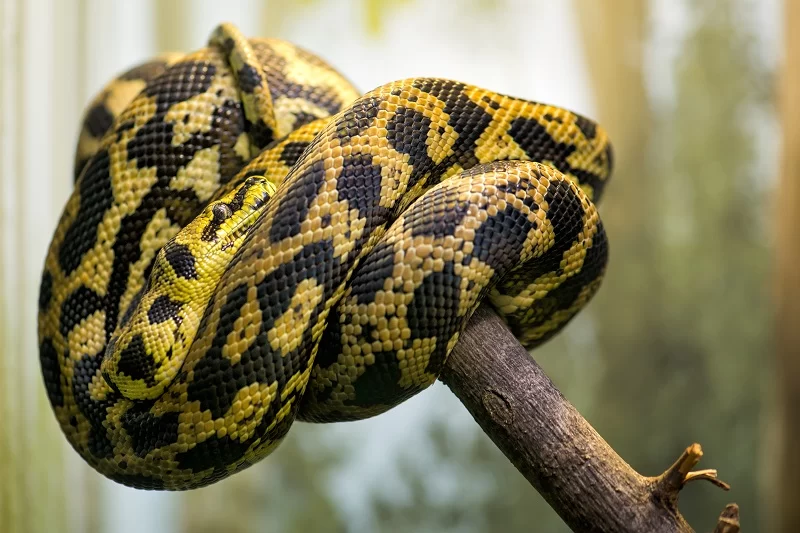How to Care for a Pet Snake with Eye Infections: Treatment, Symptoms, and Preventive Tips
- 1. Understanding Eye Infections in Snakes
- 2. Common Symptoms of Eye Infections in Snakes
- 3. Treating Eye Infections in Pet Snakes
- 4. Preventing Eye Infections in Snakes
- 5. When to Consult a Veterinarian
1. Understanding Eye Infections in Snakes
Eye infections in snakes are relatively common and can result from various factors, including poor enclosure conditions, trauma, or underlying health issues. Snakes rely heavily on their vision to navigate, and any eye-related issue can have a significant impact on their overall well-being. Eye infections are often caused by bacterial or fungal agents, but they can also result from viral infections or other environmental stressors.
It’s crucial for snake owners to understand the potential causes of eye infections to prevent them and ensure the timely treatment of any symptoms that appear. Proper care and observation are key to ensuring a healthy, happy pet snake.
2. Common Symptoms of Eye Infections in Snakes
Knowing the signs of an eye infection is the first step in identifying and treating the problem. Some of the most common symptoms of eye infections in snakes include:
- Swelling or Bulging of the Eye: This is one of the most noticeable symptoms. The eye may appear puffy or swollen, making it difficult for your snake to open or close its eye fully.
- Discharge: A watery, pus-like discharge or crust around the eyes can indicate an infection. This discharge may dry up and form a crust, which can further impair vision.
- Cloudy or Opaque Eyes: An infection may cause the eye to appear cloudy or murky. This can be a sign of a bacterial or fungal infection.
- Frequent Rubbing of the Eyes: Snakes suffering from eye infections may rub their face against the enclosure or other surfaces in an attempt to relieve discomfort.
- Reduced Activity or Appetite: If the infection is causing significant discomfort or pain, your snake may become lethargic and may show a decreased appetite.
If you notice any of these symptoms, it’s essential to act quickly to address the issue and prevent further complications.
3. Treating Eye Infections in Pet Snakes
Once an eye infection is diagnosed, prompt treatment is necessary to avoid lasting damage to the snake’s vision. Here are some of the common treatments for eye infections in snakes:
- Cleaning the Affected Area: For mild infections, gently cleaning the affected eye with saline solution or a reptile-safe eye wash can help remove discharge and reduce irritation. Be sure to follow up with a clean, soft cloth to gently pat the eye dry.
- Topical Antibiotics: In more severe cases, your veterinarian may prescribe topical antibiotics to treat the infection directly. These medications can help reduce inflammation and clear up bacterial infections.
- Systemic Medications: If the infection has spread or is particularly aggressive, your vet may recommend oral or injectable antibiotics to address the underlying infection. These medications are typically used for more serious cases.
- Improving Enclosure Conditions: Maintaining proper humidity and temperature levels is crucial for treating eye infections in snakes. A dry or excessively humid environment can exacerbate the infection. Ensure your snake’s habitat is clean, well-ventilated, and appropriately heated.
- Hydration and Supportive Care: In some cases, hydration and overall supportive care are needed to help your snake recover. Make sure your snake has access to fresh water and is not under stress during treatment.
It’s important to note that not all eye infections are the same, so treatments should be tailored to the severity of the infection and the overall health of your snake. Consult with a veterinarian who specializes in reptiles to determine the best course of action.
4. Preventing Eye Infections in Snakes
Prevention is always better than treatment, and there are several steps you can take to reduce the likelihood of eye infections in your pet snake. Here are some helpful preventive tips:
- Maintain Proper Humidity: Snakes require specific humidity levels depending on their species. Too much moisture can lead to fungal infections, while too little can cause dehydration. Ensure that the humidity in your snake’s enclosure is optimal for its specific needs.
- Keep the Enclosure Clean: Regularly clean your snake’s enclosure to prevent bacteria and fungi from accumulating. This includes changing bedding, wiping down surfaces, and disinfecting the water bowl.
- Avoid Physical Trauma: Be cautious when handling your snake, as rough handling or accidental injury can lead to eye trauma, making the eye more vulnerable to infection.
- Ensure Proper Diet and Hydration: A healthy, well-balanced diet is essential for maintaining your snake’s immune system. A snake that is well-nourished and hydrated is less likely to succumb to infections.
- Regular Veterinary Check-ups: Regular check-ups with a reptile vet can help catch any potential health issues, including eye infections, before they become serious problems.
By taking proactive steps in caring for your snake’s environment and health, you can significantly reduce the risk of eye infections and other common health issues.
5. When to Consult a Veterinarian
While minor eye infections can often be treated at home, it’s important to know when to seek professional help. If you notice any of the following signs, you should consult a veterinarian:
- If the infection worsens or doesn’t improve with at-home care.
- If your snake becomes lethargic, stops eating, or shows signs of distress.
- If the infection causes significant swelling, cloudy eyes, or discharge that doesn’t go away after a few days.
- If the infection is spreading to other parts of the snake’s body.
A veterinarian who specializes in reptiles can provide a proper diagnosis and treatment plan, ensuring that your pet snake recovers as quickly as possible.










